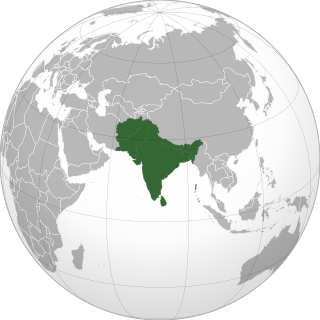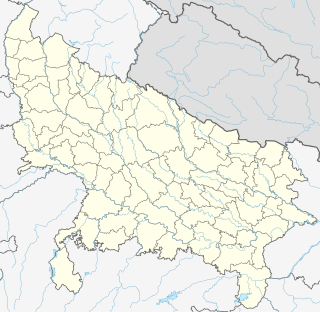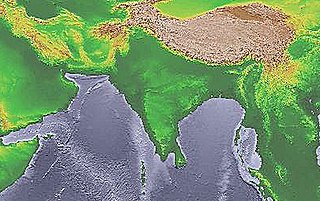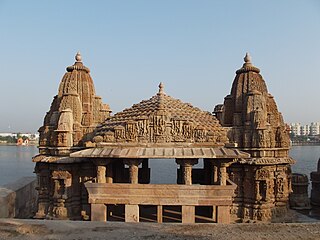 W
WArchaeology in India is mainly done under the supervision of Archaeological Survey of India.
 W
WAttirampakkam or Athirampakkam is a village located 60 kilometers away from Chennai, Tamil Nadu, India. The oldest known stone tools in India were discovered near the village, which became the type site for the Madrasian culture.
 W
WGaneshwar is a village in Neem-Ka-Thana Tehsil (Mandal) in the Sikar District of the Indian state of Rajasthan. Ganeshwar is 7.9 kilometres (4.9 mi) distance from Neem-Ka- Thana town, 66.4 kilometres (41.3 mi) from Sikar city and 83 kilometres (52 mi) from Jaipur. Excavations in the area revealed the remains of a 4,000-year-old civilization.
 W
WArchaeology in India is mainly done under the supervision of Archaeological Survey of India.
 W
WThe Indian Antiquary: A journal of oriental research in archaeology, history, literature, language, philosophy, religion, folklore, &c, &c, was a journal of original research relating to India, published between 1872 and 1933. It was founded by the archaeologist James Burgess to enable the sharing of knowledge between scholars based in Europe and in India and was notable for the high quality of its epigraphic illustrations which enabled scholars to make accurate translations of texts that in many cases remain the definitive versions to this day. It was also pioneering in its recording of Indian folklore. It was succeeded by The New Indian Antiquary (1938-47) and the Indian Antiquary (1964-71).
 W
WIn the prehistory of the Indian subcontinent, an "Iron Age" is recognized as succeeding the Late Harappan culture. The main Iron Age archaeological cultures of present-day northern India are the Painted Grey Ware culture and the Northern Black Polished Ware. This corresponds to the transition of the Janapadas or principalities of the Vedic period to the sixteen Mahajanapadas or region-states of the early historic period, culminating in the emergence of the Maurya Empire towards the end of the period.
 W
WJhusi or Jhunsi is a town and a gram panchayat in Allahabad district in the Indian state of Uttar Pradesh. It was formerly called Andhernagri and Pratishthan Pur or Puri.
 W
WJwalapuram is an archaeological site in the Kurnool district of Andhra Pradesh, southern India, which shows hominid habitation before and after the Toba event according to the Toba catastrophe theory. It is unclear what species of humans settled Jwalapuram as no fossil remains have yet been found.
 W
WKanmer, locally known as Bakar Kot, is an archaeological site belonging to Indus Valley Civilization, located in Rapar Taluk, Kutch District, Gujarat, India.
 W
WAbout 25,000 inscriptions found in Karnataka belongs to Kannada rulers like Kadambas, Western Ganga Dynasty, Rashtrakuta, Chalukya, Hoysala and Vijayanagara Empire. Many inscriptions related to Buddhism and Jainism are unearthed. The inscriptions generally found are on stone (Shilashasana) or copper plates (Tamarashasana). The Kannada inscriptions found on historical Hero Stone, coin and temple wall, piller, tablet and rock edict. These Inscription have contributed towards Kannada literature and helped to classify as Proto Kannada, Pre Old Kannada, Old Kannada, Middle Kannada and New KannadaInscriptions depicts culture, tradition and prosperity of those era. The world wide recognized literature Ramayana and Mahabharata are transferred through generation by these Inscription Hazara Rama Temple and Aranmula Parthasarathy Temple are the best example.
 W
WThe Kulu Vase is the name of an ancient buddhist bronze goblet found in the foothills of the Himalayas during the mid nineteenth century. The importance of the vase lies in the fact that it is one of the oldest metal objects to be decorated in this fashion on the Indian Subcontinent. Since 1880, the vase has been part of the British Museum's Asian collection.
 W
WLahuradewa is located in Sant Kabir Nagar District, in Sarayupar (Trans-Sarayu) region of the Upper Gangetic Plain in Uttar Pradesh state of India. The Sarayupar Plain is bounded by the Sarayu River in the west and south, Nepalese Terai in the north and the Gandak River in the east.
 W
WLungzubel which means "Stone rice beer containers or jars" in the Biate language are stone relics found in the southwestern part of Dima Hasao district in Assam and its surrounding areas extending to the neighboring state of Meghalaya.
 W
WMarine archeology in the Gulf of Khambhat - earlier known as Gulf of Cambay - centers around controversial findings made in December 2000 by the National Institute of Ocean Technology (NIOT) under the Gulf of Khambhat, a bay on the Arabian Sea on the west coast of India. The structures and artifacts discovered by NIOT are the subject of contention. The major disputes surrounding the Gulf of Khambhat Cultural Complex (GKCC) are claims about the existence of submerged city-like structures, the difficulty associating dated artifacts with the site itself, and disputes about whether stone artifacts recovered at the site are actually geofacts or artifacts. One major complaint is that artifacts at the site were recovered by dredging, instead of being recovered during a controlled archeological excavation. This leads archeologists to claim that these artifacts cannot be definitively tied to the site. Because of this problem, prominent archeologists reject a piece of wood that was recovered by dredging and dated to 7500 BC as having any significance in dating the site. The surveys were followed up in the following years and two palaeo channels of old rivers were discovered in the middle of the Khambhat area under 20-40m water depths, at a distance of about 20 km from the present day coast.
 W
WMeluḫḫa or Melukhkha is the Sumerian name of a prominent trading partner of Sumer during the Middle Bronze Age. Its identification remains an open question, but most scholars associate it with the Indus Valley Civilization.
 W
WMunsar Lake is water body constructed by Minaldevi, mother of Jayasimha Siddharaja, of Chaulukya dynasty. It was named as Mansavor but due to Indiscretion it's widely known as Munsar. This lake is situated at Viramgam, near Ahmedabad.
 W
WFriedrich Oscar Oertel was a German-born engineer, architect, and archaeologist. He is best known among Indian art historians and archaeologists for having excavated the archaeological site of Sarnath in the winter of 1904–1905. It was here that in March 1905 he unearthed the capital of an Ashokan pillar, which was to become the national emblem of India. However, probably because he was mainly involved as a civil engineer and architect in the Public Works Department, his contributions to the fields of art history and archaeology are largely overlooked in the historiography of South Asian art and archaeology.
 W
WPottery in the Indian subcontinent has an ancient history and is one of the most tangible and iconic elements of Indian art. Evidence of pottery has been found in the early settlements of Lahuradewa and later the Indus Valley Civilization. Today, it is a cultural art that is still practiced extensively in Indian subcontinent. Until recent times all Indian pottery has been earthenware, including terracotta.
 W
WTamil copper-plate inscriptions are copper-plate records of grants of villages, plots of cultivable lands or other privileges to private individuals or public institutions by the members of the various South Indian royal dynasties. The study of these inscriptions has been especially important in reconstructing the history of Tamil Nadu. The grants range in date from the 10th century C.E. to the mid-19th century C.E. A large number of them belong to the pandyas, the Cholas. These plates are valuable epigraphically as they give us an insight into the social conditions of medieval South India; they also help us fill chronological gaps in the connected history of the ruling dynasties. For example, the Leyden grant of Parantaka Chola and those of Parakesari Uttama Chola are among the most important, although the most useful part, i.e., the genealogical section, of the latter's plates seems to have been lost.